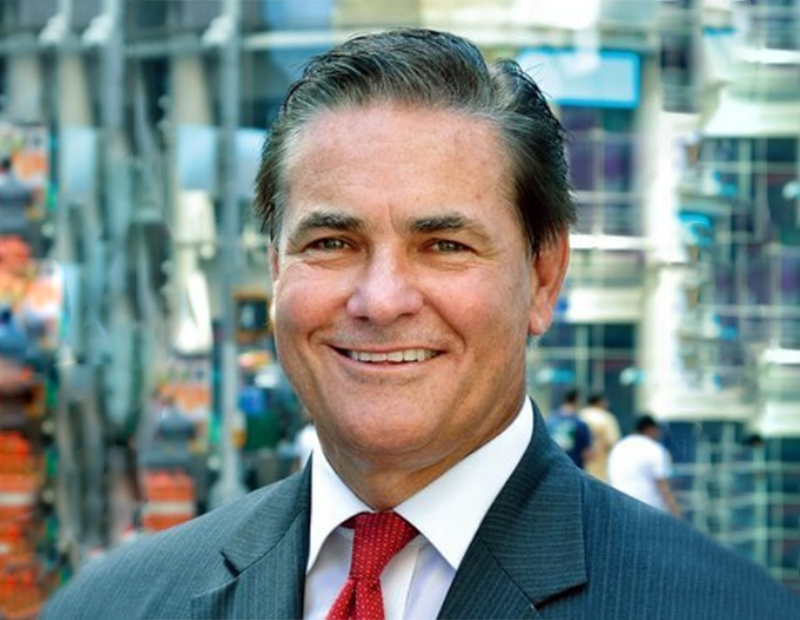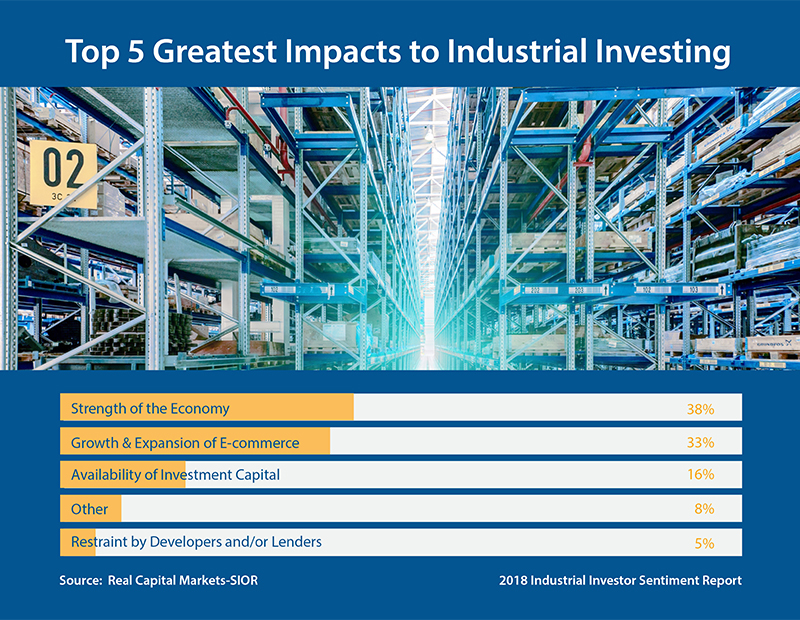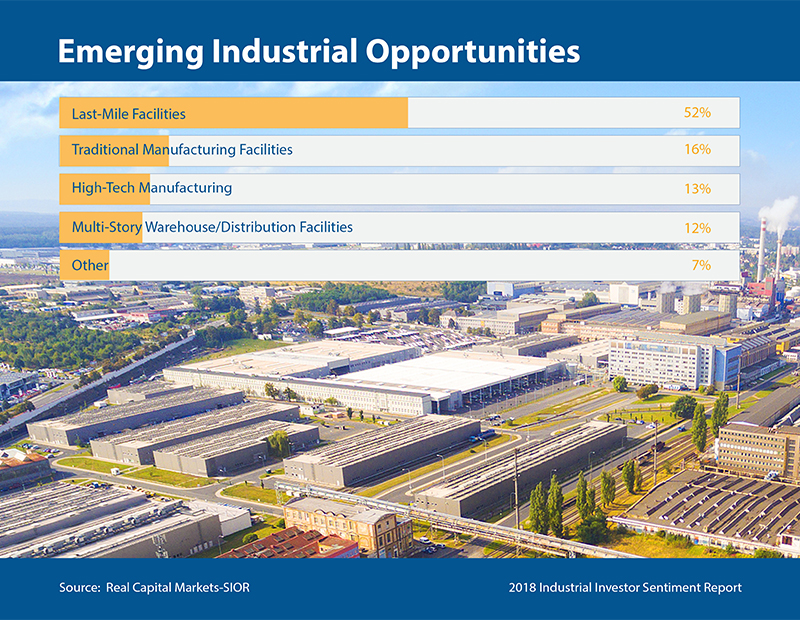RCM-SIOR Report: Strong Industrial Investment to Continue
The e-commerce boom, particularly in last-mile facilities, and economic expansion are among the drivers cited by participants in the annual survey.
The industrial investment sector—fueled by record and diversified demand, low vacancy rates, high levels of absorption and balanced construction—continues to be strong and an annual survey of industry leaders expects the strong investment activity to continue.
Nearly 92 percent of those surveyed for the 2018 Real Capital Markets-Society of Industrial and Office Realtors (RCM-SIOR) Investor Sentiment Report said they see plenty of room left on the runway for the industrial market, citing the depth and reach of the sector, the growth of e-commerce and the expanding economy, among other factors.
“The ongoing evolution of the industrial market, as developers and investors adapt to the changing needs of users, further elevates the position of industrial real estate—a trend that shows no sign of slowing,” Steve Shanahan, executive managing director, Real Capital Markets, said in the report.
RCM surveyed and conducted interviews with investment, leasing and development experts across the country to gauge their insights on the market and key issues facing the sector. Questions tracked participants’ perceptions of three key barometers: investment activity levels, pricing and cap rates.
The report found the industry executives were even more bullish on the outlook for the market than last year, when they were interviewed for the 2017 RCM-SIOR Investment Sentiment Report. More than 48 percent suggest activity will remain at or about the current levels compared to 43 percent last year.
That sentiment is interesting considering that 38 percent of the respondents this year expect pricing increases of 5 percent or more, compared to 34 percent in 2017. The area with the greatest difference year-over-year is the expectation for cap rates, which are as low as 3.5 percent in Los Angeles. In this year’s survey, 44 percent said they expect cap rates to go higher compared to 35 percent predicting an increase in 2017.
Growth of ‘last-mile’
One of the key findings, though, was the belief that there is no reason to think activity will drop off significantly in the foreseeable future due to an expansion in e-commerce, including growth in the grocery delivery space, fueling optimism about leasing, development and capital markets. As part of that e-commerce focus, last-mile facilities are seen as the greatest area of growth opportunities and critical to companies that want to make next-day and same-day deliveries.
When asked to pick the emerging and expanding opportunities in the industrial sector, 52 percent responded last-mile facilities, compared to much lower responses for traditional manufacturing facilities (16 percent); high-tech manufacturing (13 percent); multi-story warehouse/distribution facilities (12 percent) and other (7 percent).
Robert Thornburgh, executive vice president, Kidder Mathews, noted he has been hearing “last-mile” being referred to “first-mile” more and more, reflecting the importance and popularity being placed on these locations.
Other locations driving industrial activity are the growing port system and its ties to foreign trade. The report states, “From Los Angeles to Miami to New Jersey, industrial assets that feed into the port system are in high demand. Land and buildings near seaports are commanding premium pricing, as they allow for quick access and flow through the supply chain.”
In fact, a lack of industrial properties in general is seen as one of the biggest threats to the industrial market, along with rising interest rates and trade tariffs.
“There are fewer quality options because investors are opting to hold onto the quality assets they own. It’s providing a good return. Investors don’t want to dive into a five cap,” Del Markward, president & CEO of Markward Group in Allentown, Pa., said of the lack of supply.
At least 29 percent of the survey participants believe the greatest threat to the industrial market could come from the ongoing trade wars and tariffs, which impact the general economy as well as construction costs, including tariffs on steel.
“The wild card is the tariffs. The economy can probably withstand a 10 percent tariff, but the impact of that going to 25 percent is another question,” Markward noted in the report.
Despite their concerns over interest rates and tariffs, a majority of those surveyed felt the general strength of the economy (38 percent) and growth and expansion of e-commerce (35 percent) are having the greatest impact on the industrial sector.
“A pause and potentially sideways activity down the road is inevitable as the market readjusts to some new direction. When is anyone’s guess,” Thornburgh said in the report. “However, with extremely solid fundamentals and continued build-out of the e-commerce logistics system by many different players, industrial product will not lose its newfound utility value in our new world any time soon.”
Images courtesy of RCM-SIOR












You must be logged in to post a comment.